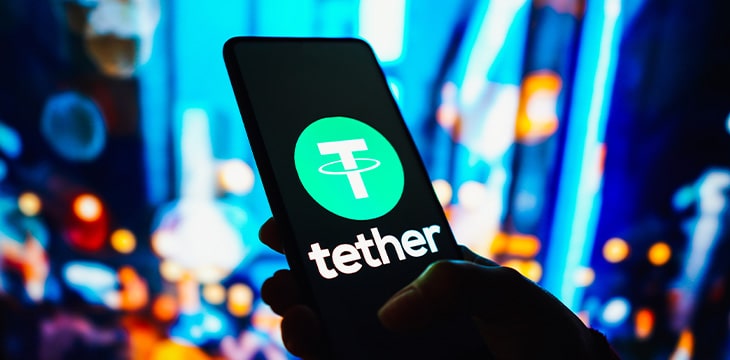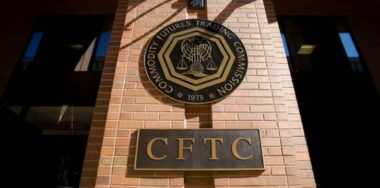The founder of Binance, the largest cryptocurrency exchange by trading volume, has no faith that Tether, the largest stablecoin by market cap, is actually redeemable for dollars.
Recently, Binance boss Changpeng ‘CZ’ Zhao gave an interview to Protocol that discussed Binance’s relationship with the two largest stablecoins by market cap: Tether and Circle’s USDC. On September 5, Binance abruptly informed customers that all USDC they already had on the site or deposited in the future would be automatically converted to Binance’s in-house stablecoin BUSD (the third-largest by market cap).
While customers would still be able to request withdrawals of their forcibly converted BUSD in USDC, many observers expressed alarm at the way Binance appeared to be throwing its weight around to hobble its competitors. (The exchange simultaneously inflicted a similar forced conversion on smaller stablecoins USDP (Pax Dollar) and TUSD (TrueUSD).) BUSD’s trading volume spiked by more than one-half following Binance’s announcement.
CZ previously claimed that Binance’s direct involvement in BUSD is limited to “branding support” but the coin was launched in 2019 as a formal partnership with Paxos (which also issues USDP) and CZ described BUSD at the time as “our native stablecoin.” (CZ also has a history of promoting partnerships when they suit his narrative and denying the same partnerships when they might get him in trouble.)
Asked by Protocol’s Benjamin Pimentel whether Binance had consulted with Circle regarding the exchange’s forced conversions, CZ said Circle was “okay with it.” However, while Circle boss Jeremy Allaire confirmed that Binance had disclosed “their intentions” re USDC, he also told Protocol that Binance “unilaterally took customers’ funds and then moved them into something else. And I think that’s really problematic.”
Allaire has valiantly attempted to spin Binance’s “converged dollar books” as “a good thing” for USDC, but a Circle spokesperson previously told TechCrunch that “while optimizing dollar liquidity on the world’s largest exchange may carry benefits, the paradigm does raise potential market conduct questions.”
Black box or black hole?
Challenged by Protocol as to why Binance has yet to adopt a similar forced conversion policy towards Tether, CZ gave an extremely illuminating answer, which warrants reprinting in full:
Tether, to be honest, we don’t know if it will depeg [aka lose its nominal 1:1 ratio with the U.S. dollar]. We have a commercial relationship with Circle for converting at a one-to-one peg. We have an agreement with Circle that we feel pretty confident that we can exchange that one to one, whereas with Tether we don’t have this commercial agreement in place.
Tether is a black box, and because we don’t have the commercial agreement in place, we don’t have a channel to convert one to one. We didn’t feel comfortable [that it is] always guaranteed a one-to-one conversion.
Tether’s refusal to submit to an audit of the reserves supposedly backing its circulating USDT (currently $68 billion) is the stuff of legend, although U.S. courts recently ordered Tether’s parent company to submit detailed records of its reserves as part of a lawsuit brought by traders who accuse Tether of distorting the overall digital assets market.
Binance is heavily reliant on Tether, as investigations have revealed that one-fifth of all USDT ever issued was sent to Binance by some of crypto’s biggest market-makers. Other studies have shown that Tether was used by exchanges such as Bitfinex—owned by the same company as Tether—to artificially inflate the value of digital tokens like BTC.
The fact that Binance continues to welcome such significant volumes of USDT despite CZ’s lack of faith in Tether’s ability to redeem all the USDT it’s issued should alarm all concerned, particularly given the recent catastrophic failures of so many other crypto projects. Then again, maybe CZ is just looking to undermine USDT like he undermined USDC, albeit by a slightly different method, to boost BUSD’s chances of becoming the dominant dollar-based stablecoin.
Last one into the pool…
In other Binance news, the company surprised the market this week by announcing the launch of a mining pool for ETHW. ETHW (or ETHPoW) is the version of the Ethereum blockchain that retains the original’s proof-of-work consensus mechanism after the main network’s recent switch to a proof-of-stake model. Customers who participate in Binance’s pool can do so without fees on their earnings until October 29.
Binance has yet to actually list the ETHW token, the value of which nonetheless enjoyed a healthy (if brief) spike on the news. ETHW is currently trading around $12, about one-fifth of the value it enjoyed at the start of September. Binance said this week that there was no guarantee that it would ever list ETHW and that the token would “go through the same strict listing review process as Binance does for any other coin/token.”
Binance’s public ambivalence towards ETHW both before and after the ‘Merge’ no doubt played a role in the token’s value decline and may have also contributed to the decision by many former Ethereum miners who switched to mining ETHW to hoist the white flag and sell their mining rigs while they still retain some value.
One could view Binance’s ETHW mining pool announcement as filling a market void. More cynical observers might suggest that Binance deliberately played coy regarding its ETHW intentions in order to thin the herd and give its fledgling pool a better shot at success.
Sumimasen deshita, fsa
Finally, Binance is reportedly trying to re-enter Japan, four years after the exchange flew the coop following demands from local regulators to improve its anti-money laundering (AML) and ‘know your customer’ (KYC) protocols. Binance never obtained a license to operate in the country and chose to leave rather than abide by the rules of Japan’s Financial Services Agency (FSA).
This week, Bloomberg reported that Binance was now ready to play nice with the FSA, in part because Japan’s government has made noises about the need for the local tech scene to not miss out on any Web3 opportunities. A Binance spokesperson declined to comment on the company’s Japanese ambitions.
Binance has a well-documented history of ignoring its regulatory obligations until it’s been backed into a corner from which there’s no escape. Despite Binance having ostensibly left Japan four years ago, the FSA was forced to issue a public warning last year that Binance wasn’t registered to do business in Japan, going as far as to cite CZ by name. No doubt the FSA will have questions when CZ’s representatives pop round to drop off their license application.
Follow CoinGeek’s Crypto Crime Cartel series, which delves into the stream of groups from BitMEX to Binance, Bitcoin.com, Blockstream, ShapeShift, Coinbase, Ripple,
Ethereum, FTX and Tether—who have co-opted the digital asset revolution and turned the industry into a minefield for naïve (and even experienced) players in the market.
New to blockchain? Check out CoinGeek’s Blockchain for Beginners section, the ultimate resource guide to learn more about blockchain technology.








